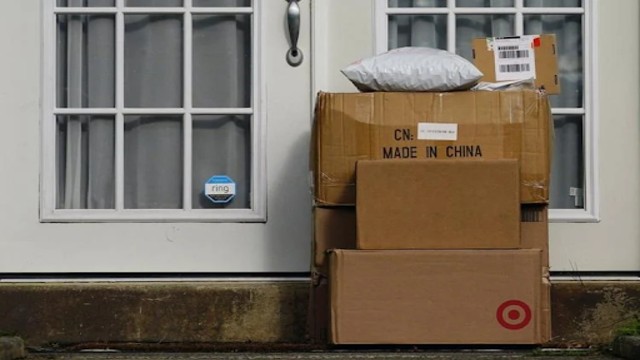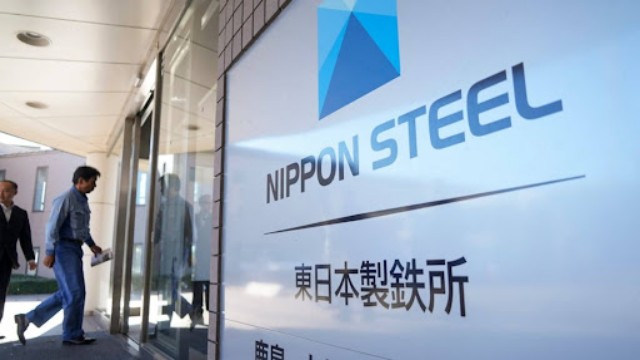
Packages are seen stacked on the doorstep of a residence, Wednesday, Oct 27, 2021, in Upper Darby, Pa, symbolizing the increase in parcel deliveries due to e-commerce activity, as new US tariffs on Chinese goods come into effect. (AP Photo via The Canadian Press)
A new wave of U.S. tariffs on Chinese imports is set to drive up prices for American shoppers. From budget-friendly apparel to electronics and car parts, a wide range of products will be affected. The additional 10% tariff took effect on Tuesday, alongside a halt on incoming parcels from China and Hong Kong by the U.S. Postal Service.
Impact on Electronics and Household Items
The U.S. imported $427 billion worth of goods from China in 2023, with consumer electronics topping the list. China remains a key manufacturing hub for tech brands like Apple, which assembles products there. According to the Consumer Technology Association, China supplied 78% of U.S. smartphone imports and 79% of laptop and tablet imports last year.
Shoppers can expect price increases on everyday essentials, including clothing, kitchenware, appliances, and auto parts. Business owners are already feeling the pinch. Jay Salaytah, a Detroit-based auto repair shop owner, purchased equipment in advance, anticipating higher costs. “I knew the prices would rise, so I stocked up before the tariffs hit,” he said.
Low-Cost Fashion and E-Commerce Giants Affected
Trump’s executive order also suspended a trade exemption known as "de minimis," which previously allowed goods under $800 to enter duty-free. This change particularly impacts online retailers like Shein, Temu, and AliExpress, known for selling low-cost fashion and accessories from China.
Shein and Temu have built a massive global following by offering trendy, affordable products shipped directly from China. However, with new tariffs in place, their competitive pricing advantage may take a hit. Amazon has also attempted to compete by launching a storefront that follows a similar model.
Chinese exports of low-value packages surged from $5.3 billion in 2018 to $66 billion in 2023, according to the Congressional Research Service. Shein and Temu alone account for 17% of the U.S. discount market for fashion, toys, and household goods.
How Much Will Prices Rise Due to US Tariffs on Chinese Imports?
The exact impact remains uncertain. Previously, platforms like Shein and Temu avoided customs duties under the de minimis rule. With the new tariffs, shipments from China will now be taxed, potentially leading to price increases.
E-commerce analyst Youssef Squali predicts that most low-cost orders will be affected. However, Juozas Kaziukenas of Marketplace Pulse believes the price hikes will be minor, though delivery times could slow due to customs processing.
Third-party sellers on Amazon who source products from China are also expected to raise prices. Squali estimates mid-single-digit percentage increases across various e-commerce platforms, including Etsy.
Temu, owned by China’s PDD Holdings, has downplayed the impact of de minimis changes. The company has been working to store inventory in U.S. warehouses, a move that could help mitigate tariff-related costs.
U.S. Retailers Brace for the Impact
Retailers are already adjusting to the new trade landscape. Brieane Olson, CEO of teen fashion brand PacSun, met with suppliers in Hong Kong to prepare for the tariffs. While 35-40% of PacSun’s products come from China, the company has been diversifying its suppliers in Vietnam and Cambodia.
Surprisingly, PacSun has no immediate plans to raise prices. Olson noted that the 10% tariff is lower than expected, allowing the brand to maintain current pricing for now.
The toy industry, another sector heavily reliant on Chinese imports, is also feeling the pressure. Greg Ahearn, CEO of The Toy Association, said companies will absorb the costs initially. However, he warned that price hikes will eventually be passed down to consumers.
As the trade standoff continues, shoppers may soon notice higher prices on everyday goods, from gadgets to fashion. Whether businesses absorb the costs or shift production elsewhere, the ripple effects of these tariffs are just beginning.















